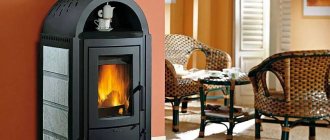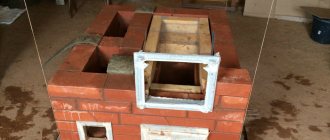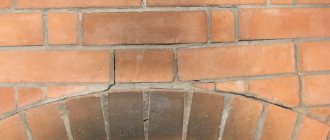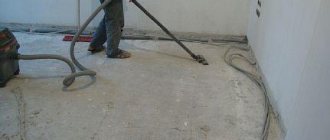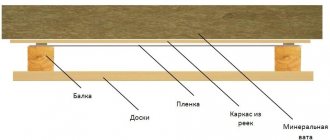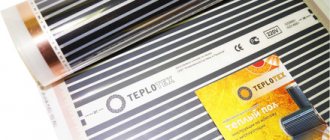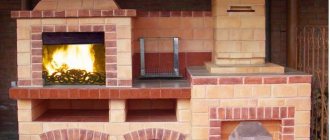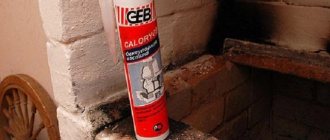Covering a stove with ceramic tiles with your own hands is not such an easy task, but if you wish and take a careful approach to this process, it is quite doable. Tidying up the walls of a brick kiln is done if the plaster previously applied to them begins to peel off, or if the brickwork, which is not covered by anything, looks sloppy.
Do-it-yourself oven cladding with ceramic tiles
This process becomes especially relevant when a major renovation is planned in the room where the stove is installed. You can, of course, remove the old cladding and plaster the surfaces with a new layer of mortar, but such a finish will still look “boring.” Therefore, quite often plaster is combined with tiles or the walls are completely finished with ceramic tiles of one type or another.
It is also important that often the ceramic layer can perform not only a decorative function - it becomes an additional heat accumulator and an effective source of thermal infrared radiation.
Preparation for lining the stove with ceramic tiles
Before purchasing and preparing materials for work, it is necessary to take into account the type of main structure and operating conditions:
- single-circuit brick kilns are characterized by strong surface heating, so the facing material and mortar must be temperature resistant. Devices of this type are used in rooms with high humidity and temperature fluctuations (baths, saunas), which also affects the careful selection of tiles and adhesive composition;
- double-circuit brick devices. The external contour of the furnace, in contact with the facing material, has a lower degree of heating than the internal one, and is characterized by the absence of local overheating points. Such characteristics make it possible to install one type of tile using one type of mortar;
- ovens with a metal surface. Furnace finishing is complicated by differences in the heating and cooling rates of metal and tiles, which can lead to deformation or destruction of the lining. Installation of lamellas is possible in a “dry” way - on a special frame.
Before starting work, calculate the total surface area of the heating device, including horizontal and vertical planes.
Take measurements of the tiles and determine the number of elements required for cladding; be sure to add 10-15% to the result obtained - the reserve may be needed in case of damage to the material during installation or to replace a surface area that has become unusable during operation.
Also decide on the installation method: straight rows (with exact alignment of the sides of the elements), diagonally, offset (type of brickwork).
The use of solid fuel for the stove requires the presence of tiles that will withstand temperatures up to 1600 ⁰; wood combustion occurs at a temperature of 700-800 ⁰, which significantly expands the choice of facing material.
Video description
Watch the video on how to attach the reinforcing mesh to the wall of the stove, if the solution is not applied.
After carrying out a set of preparatory work, you can proceed directly to the installation of the facing tiles.
Cladding with glue
Before starting installation, you must prepare the correct adhesive solution. The main components are PVA glue and cement compounds. You can add salt. The main thing is to maintain the proportions correctly.
For a person who does not have experience in preparing the solution, preparing the glue can be quite a difficult task. There is another option - buying a ready-made adhesive solution at a hardware store.
Ready-made glue Source stroyfora.ru
Classic finishing of the stove in the house with facing tiles begins with cutting the tiles. This is a complex process, but with all the necessary tools, the cutting process can only take a couple of hours.
When the glue is prepared and the tiles are cut, proceed directly to installation:
- Work begins with laying the first row. This is done using a building level and a horizontal marking cord.
- The adhesive is applied to the tiles and leveled using a notched trowel.
- A tile with an adhesive composition is applied to the furnace wall and pressed with force. The first tile must be aligned not only vertically, but also horizontally. Subsequent ones are aligned relative to the first.
Attention! The glue begins to set within 7-10 minutes. The position of the tiles must be adjusted immediately during installation.
Applying cladding to glue Source standart40.ru
Materials and necessary tools
Tile selection
The material used for finishing stoves must have the following characteristics:
- resistance to mechanical loads, strength;
- wear resistance;
- heat resistance;
- the thickness of the elements must be at least 8 mm to prevent deformation of the coating;
- environmental friendliness - during heating, toxic substances will evaporate into the surrounding space;
- moisture resistance - the water absorption coefficient should be less than 3%.
Types of tiles used for finishing stoves:
- clinker - in the production process they use the method of pressing and firing a mixture of several types of clay, fireclay and dyes. The products are durable and come in a wide range of beige shades;
- porcelain stoneware - made by pressing under high pressure and temperature of a complex composition (clay, sand, granite chips, metal salts, marble). The material is highly resistant to mechanical and thermal loads;
- terracotta - the basis of the tile is clay. The surface of the lamellas is not susceptible to scratches, the tiles are impact-resistant and can withstand temperature changes, which makes it advisable to use them for lining stoves in cold rooms;
- majolica – terracotta products covered with glaze. Used to implement unusual design solutions with elements of luxury. For the same purposes, tiles are used for finishing - high-strength, fire-resistant clay tiles, which are quite expensive.
Artificial and natural stones are in demand as facing materials: marble, sandstone, granite
Pay attention to the appearance of the products: surfaces must be the same color and not have chips or cracks. The product certificate must include a note indicating the permissibility of operation at high temperatures.
Selection of adhesive composition
Cement mixtures
They consist of highly refractory cement, sand with the addition of mineral and synthetic additives that provide the necessary thermal resistance characteristics. Dry mixtures can be purchased on the building materials market; if desired, you can make your own solution:
- take clay or fireclay, refractory cement, sand in a ratio of 1:1:3, respectively;
- displace cement and sand;
- in a separate container, dilute the clay with a small amount of water and
- add to dry mixture;
- Mix the glue thoroughly until a homogeneous mass is obtained. If necessary, add a little more liquid.
Fireclay mixtures
They have high heat resistance and are used for laying tiles on the internal and external surfaces of the stove.
Terracotta
The composition includes fireclay dust and astringent additives. The solution has high moisture resistance and can withstand heating up to 400⁰. Glue can be purchased ready-made or made: mix 2 parts of fireclay powder with 1 part of koalin clay and pour the dry mixture into a container of water, stir until smooth.
Fireproof adhesives
They are made on the basis of potassium or sodium silicate with the addition of clay and modifying additives. Maintain operational properties at temperatures of 1200-1650 ⁰С
Adhesive mastics
Silicate and phosphate compounds with mineral additives and fillers. They are moisture resistant and can withstand heating up to 1400 ⁰C.
Experts recommend choosing a cement mortar that contains salt: the component is capable of accumulating existing moisture.
Auxiliary materials
To complete the work, you will need a metal mesh, screws or dowels for fastening it, plaster to level the base, heat-resistant adhesive, plastic separating crosses or drywall cut into strips, grout, and primer.
Tools for work
- straight, serrated metal and rubber spatulas;
- tile cutter;
- metal brush;
- hammer drill or chisel;
- rubber mallet;
- level, vertical plumb line;
- construction mixer;
- container for mixing the solution.
Briefly about the main thing
There are several types of facing tiles: based on clay, natural or artificial stone. The material must be fireproof, heat-resistant, durable, not absorb moisture, conduct heat well and at the same time have an attractive appearance.
The building materials market offers models for every taste and budget: pretty terracotta and harsh fireclay tiles, amazing majolica and delicate faience, majestic marble and modest tiles, strict porcelain tiles and luxurious brooms.
There are two cladding technologies: glue and metal frame. The choice of tiles is made according to technical characteristics, taking into account markings, design and colors, and cladding technology according to the expected operating conditions.
Start of main work
Preparing the base
- remove the old paint layer with a wire brush. If tiles were used as cladding, remove them with a chisel, starting from the bottom of the stove and moving upwards;
- deepen the seams of the brickwork to ensure high-quality adhesion of the mortar by 5-10 mm;
- secure the construction mesh with slight tension along the plane of the surface. Fix with dowels or self-tapping screws so that the caps protrude 10-12 mm above the wall.
Screw the fasteners not into the masonry joints, but into the brick - this will make the structure more durable
Applying plaster
Treat the base with ready-made plaster or prepare it yourself by mixing 0.2 parts sand with 3 parts clay and 1 part cement. If the surface has significant depressions (up to 10 mm), apply the solution in two approaches. Check the evenness of the surface with a level.
After the plaster has dried, apply a heat-resistant deep penetration primer.
Before leveling the walls, heat the oven and place the solution on the base, the temperature of which is 30-35 ⁰C.
How to cover a stove so it doesn't fall off?
- make markings using a plumb line and level for the desired laying pattern, take into account that work should begin from any lower corner;
- spread the adhesive with a notched trowel on the back surface of the tile or apply it to the stove;
- press the element to the base, lightly tap it with a mallet;
- lay the remaining tiles, inserting crosses or plasterboard between adjacent lamellas;
- After finishing the work, leave the decorative coating to dry for 1-2 days.
It is not advisable to make more than 3 rows at a time: for better setting of the solution, take hour-long breaks during the laying process.
Working with seams
To mask the seams, you can use the remains of the solution used for installation or a special, heat-resistant composition of various colors:
- Using a rubber spatula, spread the mixture at the joints and level it;
- inspect the seams and, if necessary, grout again to fill all voids;
- Use a damp sponge to carefully remove excess grout; do the final cleaning of the surface of the tiles after 2-3 hours, when the grout has hardened slightly.
You can start using the oven after 6-8 days.
What glue should I use to glue tiles to the stove?
Having chosen a tile, you need to select a composition to securely fix it on the walls. To answer the question: how to glue tiles to the stove, we follow several recommendations:
- it is better to purchase a ready-made composition so as not to perform complex calculations on the amount of materials;
- we select glue produced for lining fireplaces or stoves;
- It is recommended to use heat-resistant mastic “Standard” with a heating temperature level of 10,000. We take into account the material consumption of 1.5 kg per 1 m2;
- glue “Plitonit – SupenrKamin” is produced using a dry mixture, which we dilute before work;
- Atlas-Plus hardens within a few hours. Consumption rate 2 kg per 1 m2;
- “Fixator” adhesive is recommended for use when lining garden house stoves. It can withstand high temperatures during furnace operation and cold during long breaks.
How to cut tiles?
Before the trimming process, you need to make markings using a marker and ruler. Then fix the tile in the tile cutter so that the line is located under the cutting roller. To avoid chipping, lubricate the guide frame and roller with machine oil. When the lever is lowered, the tile breaks.
It is possible to cut with an angle grinder and a stone or steel disc coated with fine-grain diamond. The grinder should be operated at low speeds.
Plastering the surface is a simpler option for finishing a stove, but a ceramic coating has great advantages: a heating device with this design is easier to keep clean, and maintenance does not require the use of special detergents. Also, due to the properties of ceramics, the heat transfer of the furnace increases.
Beginner's Guide
How many rows can be laid on the wall at one time?
Provided that the glue is correctly selected and the use of a metal profile fixing the first row, as well as plastic crosses, the number of rows is not limited. Good glue sets in 15-30 minutes. After this time, there is no need to fear that the ranks will creep down.
How to properly lay tiles on the walls in the bathroom: laying corners on the wall
Laying walls at a junction, at a protruding corner, poses difficulties for many inexperienced craftsmen.
Most often such places are located in the bathroom - communications are hidden behind them. There are three main ways to work in these zones:
- Positioned at an angle of 90 °
. This is the simplest method in which the elements are placed at an angle of 90° to each other. In this case, one cut remains open and the use of grout is necessary, which makes the results less aesthetically pleasing than with other methods. - Trimming edges
. The tile sections are ground down with a grinder or with a tile cutter to 45°, after which they are combined with each other. - Using trims
. Trims are special plastic profiles with a protruding part in the center, which are placed at the corners and covered with tiles. - Using tiles in the shape of an angle
. The easiest way. When using it, further installation is carried out from the edge of the corner tile.
How to start laying the first row: rules
When working with the first row on the wall, marks are made along the upper cut of the tile located below all.
Using a level, these marks are connected into a straight line throughout the entire fastening area, and a metal profile or strip is fixed to it, which will keep the material from sliding to the bottom.
What you need to know to lay tiles evenly on a concrete wall
In order for the ceramics to lie flat on the concrete wall, you need to carefully measure the surface. If there are no pronounced differences, use concrete contact to provide additional roughness. Sometimes plastering is required.
Is it possible to lay tiles from top to bottom?
This method of laying is unacceptable, since there is no possibility of securing the fixing profile and the lower rows will slide under the weight of the upper ones.
Overview of methods
Leveling the floor
If you have a concrete floor, you can use a special construction mixture or a solution of cement and sand. The use of the second option involves a process similar to conventional plastering.
But if you choose a building mixture, then you need to know the technology for carrying out the work. It will not be difficult to prepare such a solution, since the manufacturer prints instructions for correct mixing on each label. The standard also indicates the thickness of the layer that can be laid on the floor in the bathroom, and how long it will take to dry. If the concrete surface has pores, cracks, joints and gaps, then you need to think about waterproofing. To ensure that the mixture and the base adhere well to each other, a primer is used, which is initially used to treat the floor surface.
The next step is to draw a level along the entire perimeter of the room. This can be done using a water level. Its design is a thin hose with graduated flasks attached to it. The measurement principle is based on communicating vessels, that is, the flasks are filled with water and placed around the perimeter. To carry out high-quality measurements, it is better to carry them out together with a partner, one of whom will mark the marks on the wall, and the second will align them with the markings of the flask. Next, the resulting points are connected with a ruler into one continuous line.
The resulting horizontal lines serve as the basis for installing pendulum slats. After this, the surface is filled with the resulting solution.
If air bubbles begin to form, they can be removed using a needle roller. The direction that must be followed when leveling the floor is from the far wall to the door.
But in old houses, wood was often placed on the floor. The difficulty of such a coating is that the wood does not have a rigid structure, which means it will be difficult to lay tiles on the floor. If floor tiles are placed on old and rotten boards, they will crack very quickly.
Therefore, first of all, you need to take care of replacing old boards with new ones, the thickness of which should be at least 2.5 cm. You should not forget about protection against fungus, mold and rot. To do this, it is necessary to perform an autopsy with special solutions. Again, a layer of waterproofing is needed under the tiles on the bathroom floor.
Leveling wooden floors occurs using the same building mixture. But before pouring the surface, a construction mesh is attached with nails or pieces of brick at a distance of 5 mm. Only after this is it covered with the selected mixture. The average drying time for such a floor is 28-30 days, then further work can be carried out.
Filling the seams with a special mixture
The final stage of facing the heating block is grouting the joints. For this construction operation, a special composition is used, which, when hardened, has good resistance to aggressive substances, such as water or household detergents. After pouring a certain amount of powder into water, it should be mixed manually to the desired consistency.
Using a rubber spatula, push the finished mixture into the space between the tiles (before this, the crosses must be removed), after which, by running the corner of the tool along the seam, they give it a beautiful shape, distributing the working mass evenly.
Particular attention must be paid to places such as the windows of stove wells, having beautifully framed them using a grout mixture.
Having wiped all the seams, you should wait until the substance filling them becomes solid, after which all that remains is to remove its remains from the tile with a rag and enjoy the new beautiful look of your heating structure.
As can be seen from the above description of the work process, tiling a stove yourself with ceramic tiles is not a difficult task. It is only important to strictly adhere to the technological sequence. Of course, when performing such work for the first time, you should not expect ideal results. Still, you don’t need to worry too much about something that didn’t work out the way you would like, because, most likely, only you see these shortcomings, and to those around you, your heating structure looks very elegant.
Perhaps one of your friends will even ask you to help with renovations in their home, and over time, your new specialty will turn out to be a good help, providing you with an additional source of income.
Stylistic directions
An indoor fireplace is a multifunctional unit. In addition to heating, it performs important aesthetic functions and is an original decoration of the central room. The finishing method and the shape of the tiles have a significant impact on the overall style of the room. You can make your fireplace attractive in a variety of ways. Using facing tiles you can decorate a stove or fireplace in the following styles:
- Under Gzhel. They use majolica and tiles of various shapes. A unique design is created individually for fireplaces in rustic, ethno, country styles;
- Imitation of brickwork. Decorating a fireplace in a modern style using brick-like tiles allows you to create a unique atmosphere. Minimalist design involves completely hiding the heat source behind a brick false wall;
- Under a stone. Modern production technologies make it possible to decorate the fireplace with tiles that imitate the texture of natural stone. This material looks great in the English style, chalet, Provence;
- Mirror tiles. The finish is suitable for modern interiors in Scandinavian style, minimalism, hi-tech. Elements with reflective glossy surfaces are often placed inside the hearth to create the effect of flame reflection;
- Panel. You can lay out an original panel over the hearth using porcelain stoneware, clinker tiles, or tiles. Patterns with natural motifs and original drawings will fit perfectly into the oriental, eco style.
Color spectrum
The color of tiles for stoves and fireplaces should be matched to the overall design of the room. Clinker plates are presented mainly in natural shades - from pure white to chocolate. The range of shades of porcelain stoneware is simply huge. With its help you can create a designer unique finish for a heating unit.
If it is necessary to emphasize the naturalness of the hearth, to bring the structure as close as possible to a rustic stove, choose terracotta of a natural clay shade for cladding. Marble plates, majolica, and tiled elements are produced mainly in light colors, complemented by painting and various patterns.
Rules for installing facing elements on a stove wall
According to the technology, it is better to start gluing tiles on vertical surfaces from the bottom, and it is necessary to lay out the first row and allow the adhesive mixture to harden. This will allow you to set guides along which you can navigate when installing the next rows. Therefore, when installing the first row of facing elements, you need to be especially careful. The tile installation process is carried out in the following order:
- • Apply a sufficient layer of adhesive to the underside of the tile using a regular spatula.
- • The facing element is pressed against the base surface, first with the lower part, and then with the upper, after which it is installed in the desired position with light blows.
- • When installing each tile, it is imperative to check the correctness of its spatial location with a small level.
- • As you fill the row with facing elements, you must periodically make sure that you have not deviated from the specified parameters, using a longer level for this.
After the adhesive mixture of the first row has hardened, you can begin further installation of tiles, filling the next rows. The procedure for performing this task is the same as for the first row.
But now a long level will also be needed to check the vertical plane of the plane being created, which is advisable to do during the installation of each of its next elements.
A stove wall usually has certain places in its structure that should not be covered with a tiled covering, for example, firebox and ash doors, well windows for removing accumulated soot, and so on. In order to beautifully decorate such areas when installing tiles on the wall of the stove, it is necessary to change the format of the ceramic tiles, which means removing any of its fragments and, quite often, the figured ones. Tile is a rather fragile material, so if the cut line is not straight, but has any angles or turns, then you should use a grinder to form a non-standard element, after which it is mounted on the wall in the prepared space.
It is also often necessary to cut tiles when completing a row, since it is rare that there will be an even amount of tiles on the wall. Therefore, you need to measure the width of the missing piece with a tape measure, taking into account the size of the seam.
After this, you need to make an insert of the required size, separating the excess part from the whole tile using a tile cutter.
The finished part should be installed in its place using the same adhesive.
As can be seen in the photographs presented above, in order to achieve as much symmetry as possible when installing elements of the tiled covering, it is important to use limiting crosses, which are inserted into the seams between the tiles, two on each side.
This will ensure uniform spacing between the installed elements and keep them in this position until the installation mixture hardens. When the surface of the stove wall is completely covered with tiles, you will need to wait a day or two so that the hydration of the cement included in the installation mixture occurs to a sufficient extent, when you no longer need to be afraid that the stability of the elements of the tile covering will be disrupted.
Porcelain tiles
It is also considered a suitable option, helping to produce excellent tiles for various rooms with high humidity. These could be baths, saunas, modifications of stoves for installation under the soaring sun in the summer. Ceramic tiles for stoves created by various manufacturers are distinguished by a number of distinctive characteristics:
- Externally, it should be characterized as a monolithic product;
- It is very durable and can withstand severe external pressure;
- It has the lowest level of water absorption among the entire list of existing options. It amounted to some 0.05%;
- It withstands low and high temperatures equally well;
- Stands out for the width of available colors. It can create an imitation of many materials: marble base, granite, terracotta and even majolica.
Experts consider this material multifunctional and the most convenient for working on the design of baths and saunas. This is due to the fact that only it has all the necessary qualities to fit perfectly into the various styles used for such premises.
It all starts with calculations
A little preface. Ceramic tiles include just a few of the most common types, which have significant differences. Its history goes back hundreds of years, which suggests that it is an indispensable material for lining stoves.
So, before proceeding with the direct selection of materials necessary for work, the area of the furnace is measured. And also do not forget that adjacent surfaces (walls, floors and ceilings) that will be exposed to temperature must first of all be finished with fire-resistant elements.
Tile adhesive is calculated separately. To do this, you can read the instructions that each manufacturer places on the packaging. You can also use free calculators found on sellers’ websites.
Additionally you will need:
- rags;
- roller and brush;
- mallet;
- tile cutter;
- screwdriver;
- level and rule;
- fine mesh;
- trowel and spatula.
I would like to immediately give some advice:
- Tiling a stove does not take place without damaging the material, especially when you work with your own hands. Even experienced craftsmen take into account the required margin of ten percent, which is due to damage or other defects.
- Before covering the heat source with a decorative layer, it needs to be strengthened. To do this, a wire is often used, which is stretched to form a cellular structure. But you can use a ready-made mesh.
- You can make your own mortar for laying tiles. It should be borne in mind that it is better to cook it in small portions.

